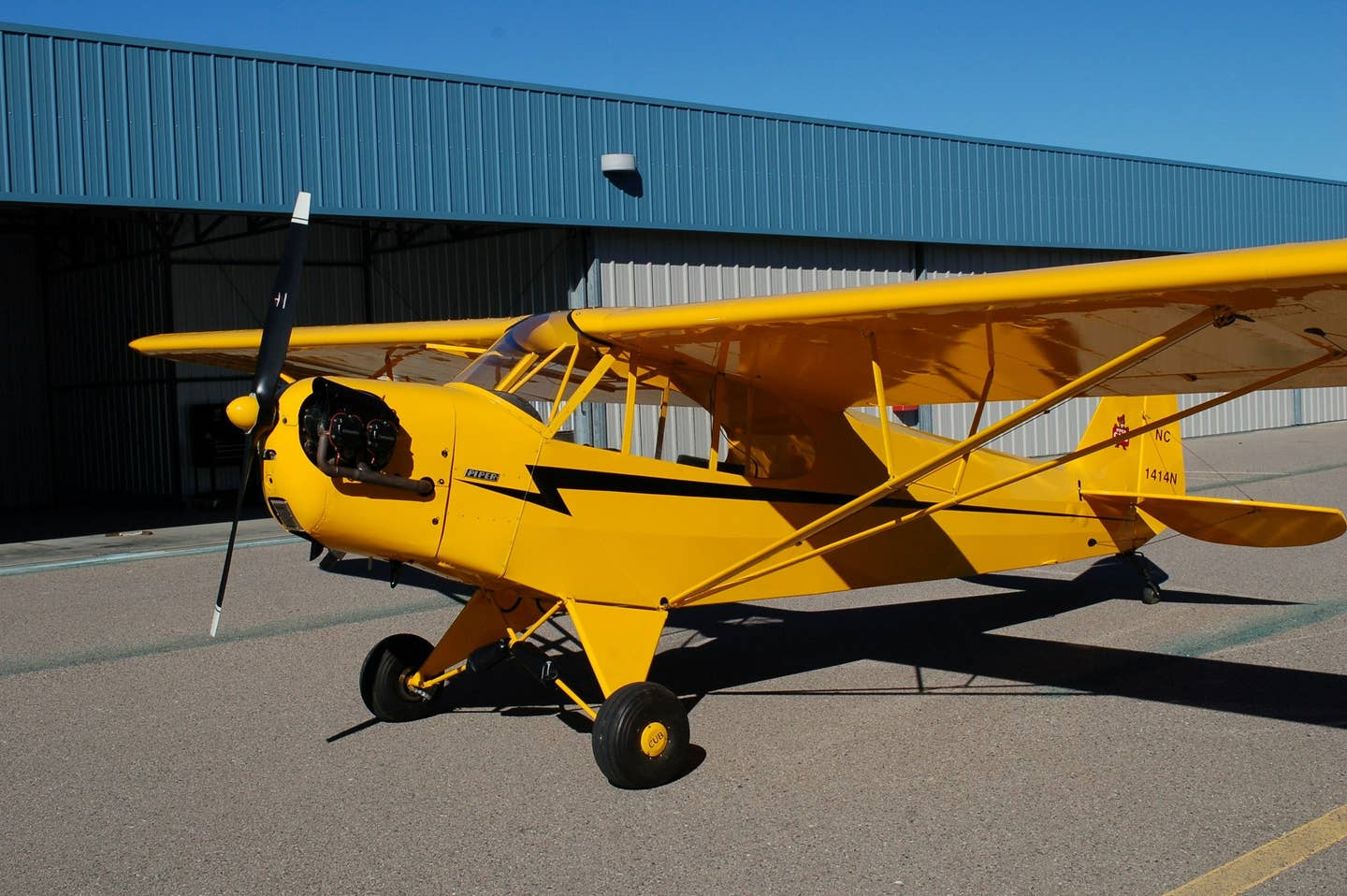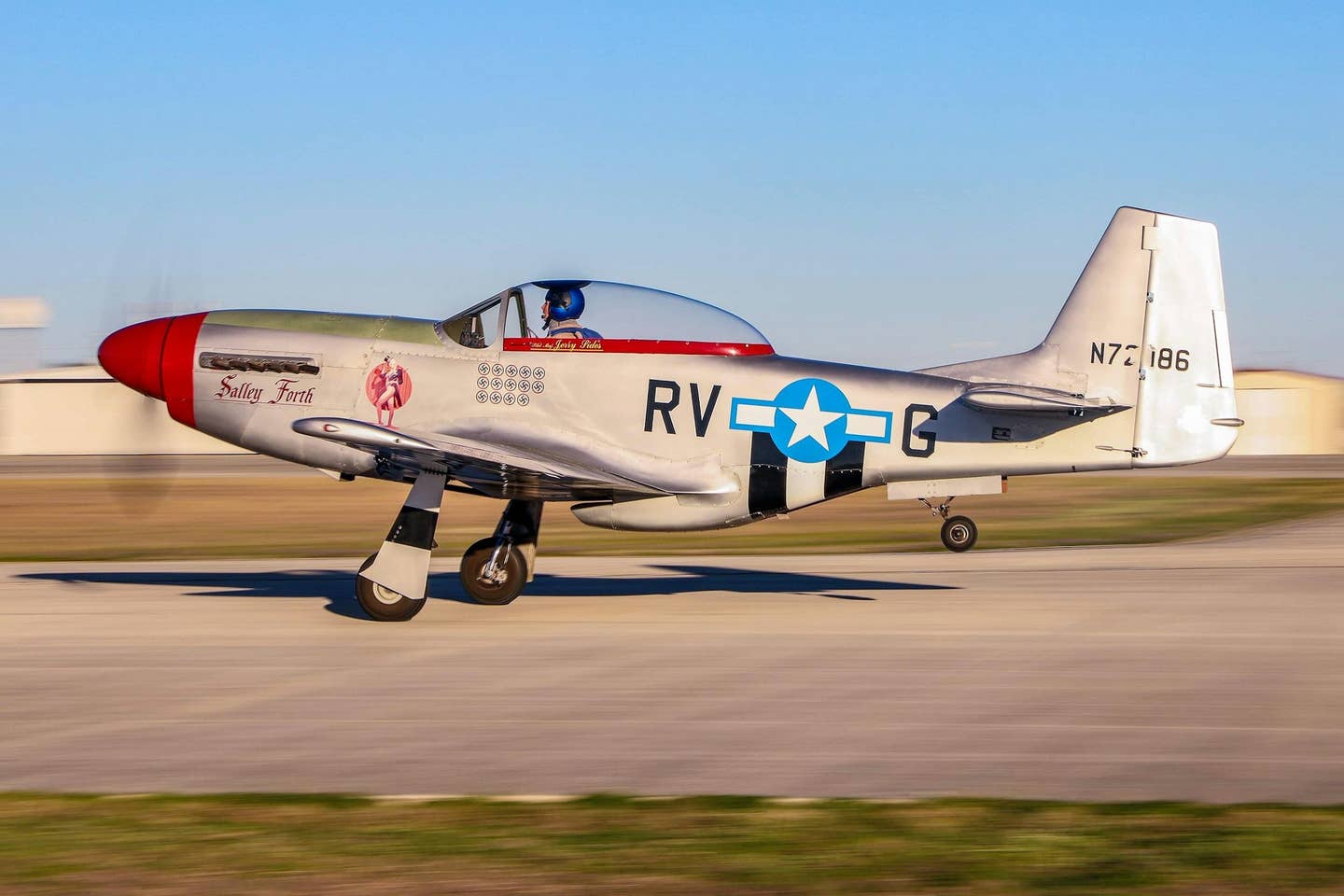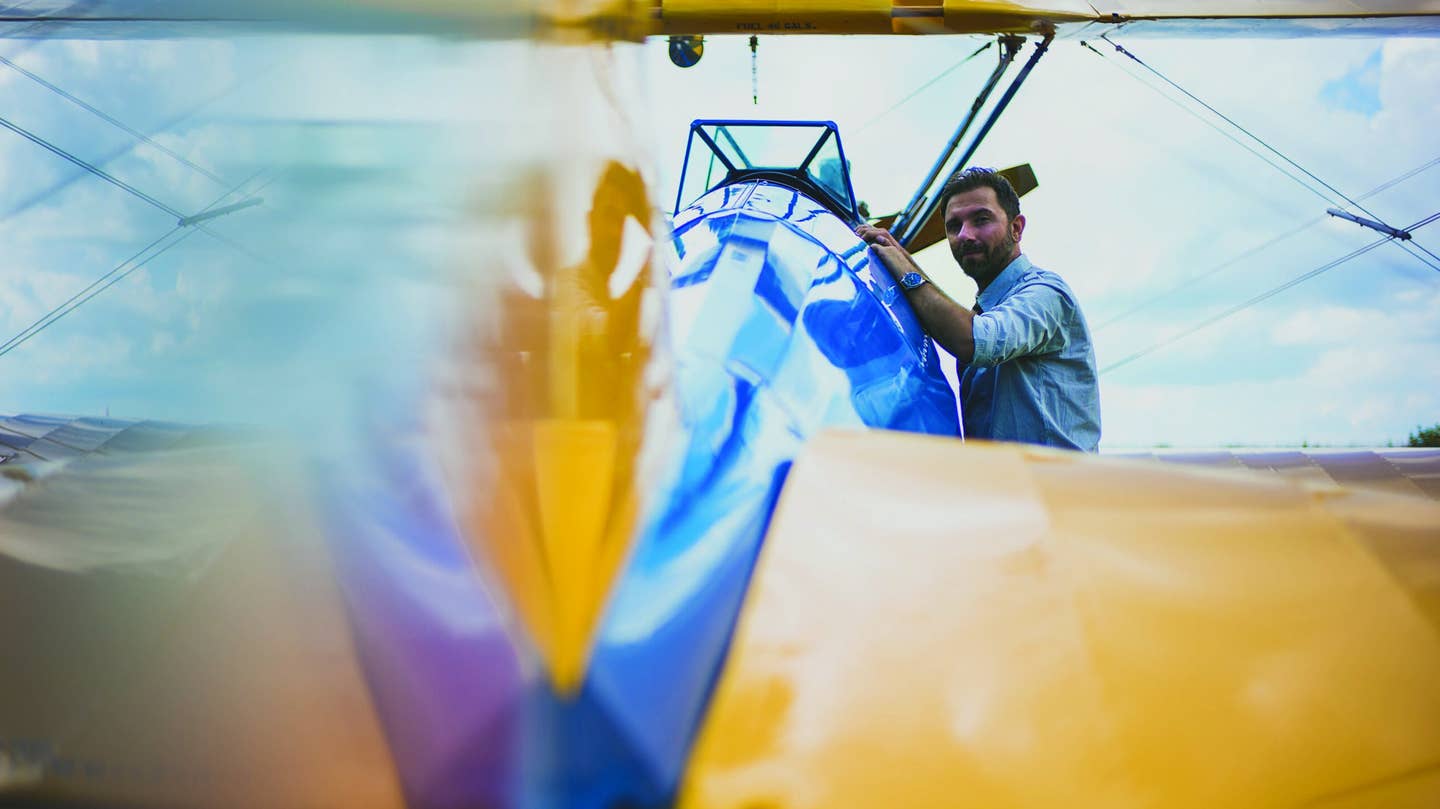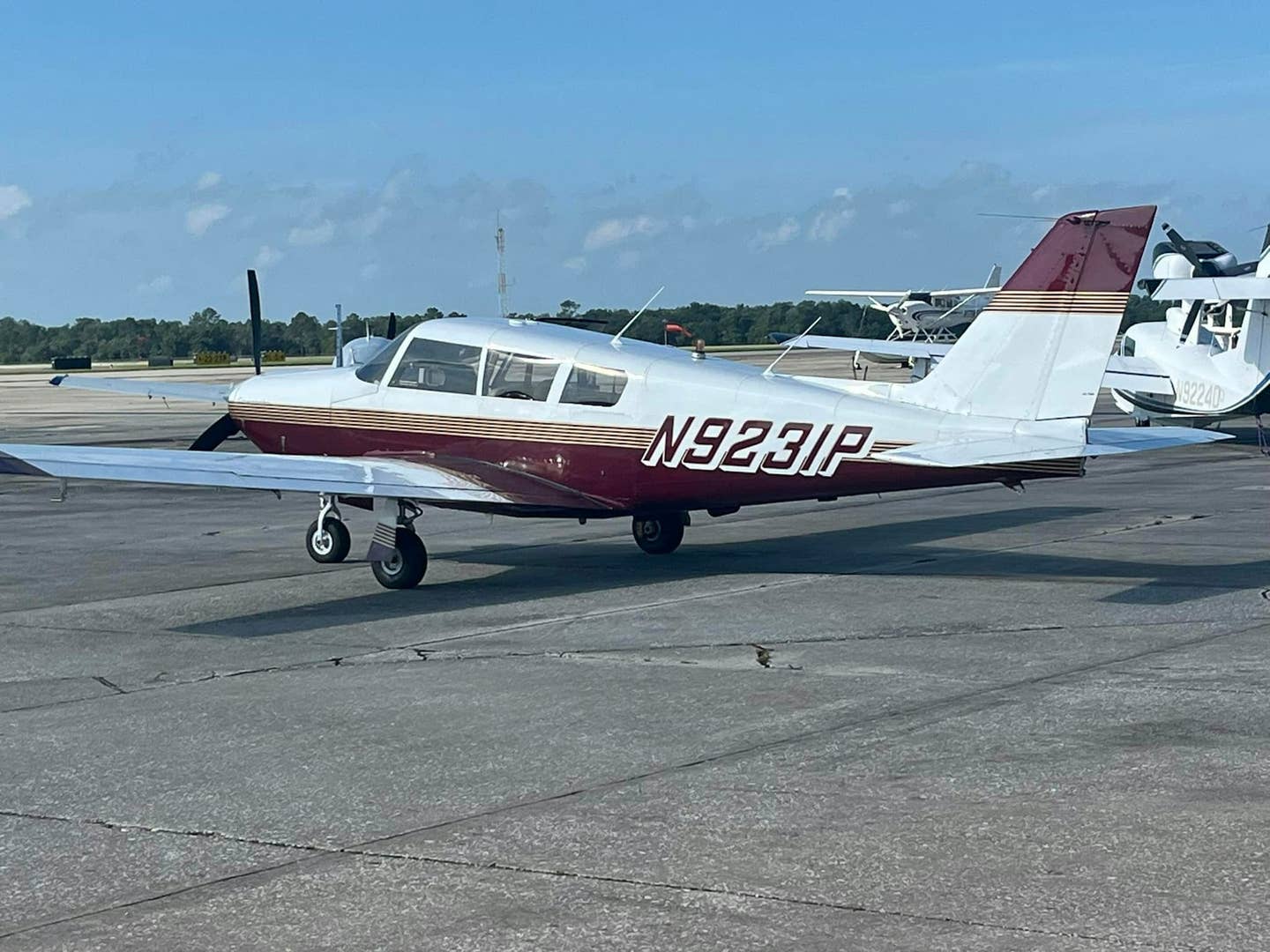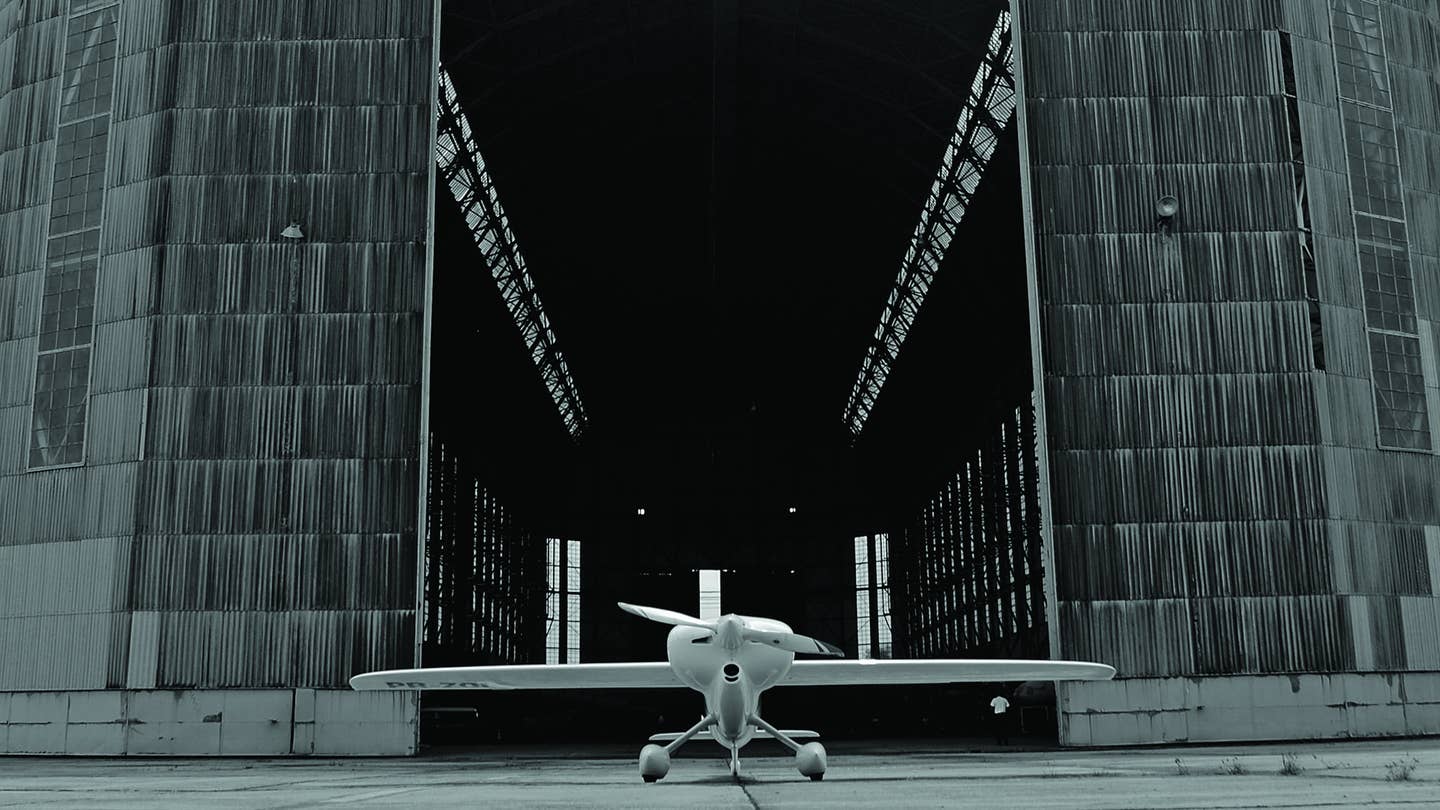
The mako shark may not be the biggest, but it is the fastest and one of the most ferocious of all the shark species. Capable of traveling as fast as 60 mph over sustained distances, the mako has been known to spring surprise attacks on humans, though it doesn’t prefer human flesh. Its favorite food is tuna, and its body has evolved to surpass the speed of its prey. Its tail is similar to the tuna’s, and its musculature is buried near the spine, unlike other sharks with muscles that run alongside the outer surface of the body. The result of this evolutionary refinement is super speed.
The Portuguese word for the mako shark is anequim, a name adopted for a sleek single-engine speedster designed by a team of professors and students at the Center for Aeronautical Studies at the Federal University of Minas Gerais (CEA-UFMG) in Belo Horizonte, Brazil. With lines similar to those of a mako’s body, Anequim CEA-311 is a light-composite airplane powered by a four-cylinder Lycoming IO-360 (albeit modified for Anequim), the same engine installed in many Cessna 172s and Piper Cherokees. While Skyhawks and Cherokees would be hard pressed to surpass 125 knots, Anequim has been clocked at a mind-blowing 282 knots (324 mph) and achieved no fewer than four speed records this past summer. How’s that for evolution?
Speed records have been a fact of life in the world of transportation ever since people starting moving around with anything but their feet. Famed NASCAR driver Richard Petty once said, “There is no doubt about precisely when folks began racing each other in automobiles. It was the day they built the second automobile.” The same analogy can be applied to the short history of aviation.
The Fédération Aéronautique Internationale (FAI), the international governing body of aeronautical performance records, was suggested by a small group of European aero-club leaders in June 1905, a year and a half after the Wright brothers made their first flights at Kitty Hawk. The FAI was formed in October of that year and is still going strong more than 110 years later. Its objectives to “methodically catalogue the best performances achieved so that they be known to everybody; to identify their distinguishing features so as to permit comparisons to be made; and to verify evidence and thus ensure that record holders have undisputed claims to their titles” have remained through the years. With headquarters in Lausanne, Switzerland, FAI’s speed records are recorded in kilometers per hour.
The constant desire for ever-greater speed resulted in a fairly straight, steep graph for the ultimate top speed achieved in powered airplanes over the first 75 years of flight. If we can agree with the popular assumption that the Wright brothers were indeed first to fly, it all started at a measly 7 mph. Famed Brazilian Alberto Santos-Dumont set the first speed record recorded by the FAI in November 1906. Santos-Dumont barely reached 26 mph, still a significant improvement over the Wrights’ first flight.
The quest for speed reached a historic milestone in 1947 when Chuck Yeager surpassed the speed of sound in level flight (around 670 mph at 25,000 feet where Yeager was flying), a barrier some thought was unbreakable. Of course, that feat has since been blown away. The overall top speed recorded by the FAI for a powered airplane was set in 1976 and lies with the Lockheed SR-71 Blackbird at 2,193 mph (3,529 kph/1,906 knots). The rocket-powered North American X-15, though not officially entered in the FAI records, reached 4,519 mph in 1967. And while it is difficult to fathom, the space shuttle has traveled at speeds of around 17,500 mph during re-entry into the atmosphere.
While the ultimate speed for powered airplanes has not been broken for decades, there are constant improvements being made to light-airplane designs to make them faster. FAI records are often documented in what appears to be a limitless number of subclasses and record types. Most records are associated with speed, but there are also categories related to climb performance, range and payload capacity. During the months of August, September and October of last year, no fewer than 23 world marks were set in a variety of record types for powered airplanes. Five of those belong to Anequim: four speed records and one time-to-climb.
If you want to get your name on the list of people who have broken an aeronautical speed record, chances are you can. Some records are fairly easy to achieve, such as those covering the speed between certain city pairs. These can be established without having any previous history, so it is not necessary to break anyone else’s record to get in the books. There are, however, several steps to complete, strict observation and documentation requirements to meet, and fees to pay.
The records selected for Anequim were well established, covering the speed over certain exact distances for airplanes within its weight category rather than city pairs. These types of records present a greater challenge because you compete with the pilots who have tried and succeeded before you.
While the motivation for many pilots who break records may be to get their names in the history books, for Paulo Iscold, professor of the airplane design team at CEA-UFMG, the mission was far bolder. He used speed records as a tool to motivate his students to reach their greatest potential.
Anequim was not the school’s first airplane project. The program was started in the early 1960s with a sailplane named CB-1 Gaviota, which was engineered by professor Cláudio Pinto de Barros, who founded CEA at age 25, and his students. “For me, he was like a father,” Iscold says of Barros. “In fact, my father was professor Cláudio’s student too.”
Four additional models — two sailplanes, a motor glider and an ultralight — were built at the school before Iscold began his mission to motivate his students by creating record-speed-breaking airplanes. While the airplanes designed at the school often have names, there are also number designations for each, like the Anequim CEA-311. CEA stands for the Portuguese name for the Center for Aeronautical Studies. The number 3 denotes an airplane (1 is for sailplane and 2 is for ultralight). And the remaining two numbers are the order numbers for the design. As mentioned before, only seven airplanes have been built at the school, but Anequim is the 11th design produced.
The workshop at CEA-UFMG runs about 50 to 60 hours a week, with each student dedicating about 10 to 20 hours a week there. Both undergraduate and graduate students work on the projects. The grad students focus on the more advanced portions, such as aerodynamic design and flutter analysis, while the undergrad students home in on structural design and fabrication. About 30 students worked on the Anequim project for nearly five years from start to finish before the record flight, Iscold says.
The project was broken down into three segments: design, fabrication and flight. The students were involved in all stages except the actual flight, which was carried out by Gúnar Armin Halboth, a professional pilot who has logged thousands of hours flying airliners, bizjets, helicopters and sport airplanes.
While Iscold laid out the basic design parameters for the airplane, including the engine, the design details were engineered and built by the students. They were assigned different tasks, and then Iscold essentially assembled the puzzle pieces. “It’s a little tricky putting everything together,” he says. Anequim was a special challenge due to its extreme speed and small size. “Especially on Anequim, I had to put my eyes on everything with super detail.”
Design and fabrication aside, financing a project such as Anequim is a challenge in itself. Iscold decided not to allow that challenge to get in his way. He simply started the project. In the end, somehow the funding came together. “Gúnar helped a lot, and we had a lot of sponsors,” Iscold says.
Development on the first speedster began in 2000 for an airplane named CEA-308. Unfortunately, the project was halted when the Rotax engine failed and the airplane suffered damage. But in 2007, the project was revived.
Modifications were made, and a Jabiru 2200 engine was installed. The stock engine was not new, and it was later discovered that one cylinder was leaking. Nonetheless, in December 2010, Halboth achieved three speed records and one time-to-climb record in the airplane in the C-1a/0 subclass for powered land airplanes weighing less than 300 kg.
The excitement of the success spurred the Anequim project, which began almost immediately afterward. While the mako shark reference was not intentional, Iscold says, “It came up looking like a shark.” An early sketch of Anequim from March 2011 even incorporates a toothy grin.
Like the mako shark, which has skin made up of tiny toothlike scales called “denticles” that help provide speed through the water, the material of Anequim’s fuselage was critical to its success. The airframe is made mostly of carbon fiber, which is not only extremely strong and light, but also allows for aerodynamic shaping and is the best material for preventing flutter, Iscold says. The vertical stabilizer, however, is constructed with glass fiber because the VHF antenna is mounted on top, and carbon fiber would interfere with radio transmissions.
With high speed being the goal of the project, one of the greatest concerns was flutter, Iscold says. The team spent a year and a half performing flutter analyses and studying various models, mostly in the computer environment. A wind tunnel was also used, but only on separate parts rather than the entire airplane design.
The power plant is integral to the achievement of speed. Iscold jokingly says, “The best way to reduce drag is to increase the power.” Two Pratt & Whitney J-58 turbo ramjets, for example, powered the SR-71, and each engine produced 32,500 pounds of thrust, which translated to about 160,000 shp. However, it is hardly worth pointing out that the school’s limited budget would not support using a power plant of that dimension.
Instead Iscold and his students were limited to the good-old 180 hp Lycoming IO-360. To provide a speed boost, however, Moneta, Virginia-based Sky Dynamics modified the engine to achieve a horsepower rating of around 220 hp. Some of the modifications, Iscold says, included incorporating high-compression pistons, ported cylinders, gapless rings and electronic ignition. After the Sky Dynamics mods were done, the engine was transformed to an AEIO-360.
The engine was also balanced to allow the pilot to push it to 3,000 rpm. In the future, Iscold says, it will be able to achieve 3,400 rpm, which will also further improve the available horsepower. Optimal engine installation is also a key to achieving maximum speed, Iscold says. “We paid a lot of attention to the engine installation, especially with the internal aerodynamics to provide air for cooling and for the induction system,” he says. “Cooling is essential to produce power. A lot of people [try] to reduce the cooling drag compromising the cooling itself, and that doesn’t work.
“For the induction system, we used the ram effect, and we tried to build a Helmholtz resonator before the fuel servo,” Iscold says. “It is not perfect, but we can see some consistent improvements in manifold pressure.” The engine is mounted to a literally bulletproof firewall made of carbon fiber and titanium, and it spins a Catto wood/composite propeller. For the speed records, a two-blade version was installed, while a three-blade prop was used for the time-to-climb flights.
Another way to achieve greater speeds, obviously, is to optimize the aerodynamics and minimize the drag of the airplane. Iscold says that, ultimately, the airplane should be designed so that the pilot is hidden behind the engine. However, that would provide about as much forward visibility for Halboth as Charles Lindberg had in the Spirit of St. Louis.
“Internal space and visibility were [key factors] to help reach the speeds we wanted,” Halboth says. “The less of each one, the faster the airplane can be. I can say I didn’t ask too much and it paid off.” Getting into the airplane requires Halboth to “step inside and slip all the way in,” he says. With the pilot being in a reclined position, toe brakes were not an option. Instead the brakes are activated with the heels, much like the brake system in a Piper Cub.
Anequim is controlled with a sidestick, which Halboth describes as “very ergonomic,” with the electric trim switch on top. Flaps are also electrically actuated. Iscold says the sidestick allows for more pitch stability in turbulence compared with a center stick where the pilot’s arm has a tendency to move up and down as the airplane bounces around. With a sidestick, the arm can rest on an armrest, providing stability in the bumps.
While retractable landing gear reduces all of the drag associated with the gear legs and wheels, Iscold found that great speed could be achieved simply by designing the gear aerodynamically and with much greater simplicity than having a retractable system. In addition, the fuselage would have to be thicker to provide space for the gear, which would increase not only the size but also the weight, putting the airplane out of the C-1a subclass.
As the design of each component was completed, the students began fabricating the parts for the airplane. CNC (computer numerical control) machines created molds for the parts that the students had designed with their computers. And after completing the lengthy task of producing the parts and piecing the puzzle together, it was time for the flight phase.
Halboth’s first flight in Anequim ended up being a nail-biter. After tracking the project closely throughout its progress and providing input from a pilot’s perspective, he knew what to expect as far as the flight characteristics were concerned. He found them to be similar to the CEA-308.
One of Halboth’s requests for Anequim that didn’t exist on the CEA-308 was a drag device. The solution was split flaps, which are not efficient for adding lift but add a lot of drag, which is what the pilot needed to slow down for landing. Sadly, on that very first flight, the flaps malfunctioned and Halboth had to attempt the first landing in Anequim without the much-needed flaps. After several go-arounds, Halboth found his only choice was to shut down the engine.
He cut the engine during the flare, but the landing roll ended up being “very long.” Fortunately, the flight test was conducted at the airport in Divinópolis, which has a runway that is more than 5,000 feet long and quite wide. Also, “it’s a really empty airport,” Iscold says. The airport near the university has a shorter runway and prevalent crosswinds. So, despite the flap mishap, the first flight was a success, and neither human nor airplane was harmed.
With the flaps functioning, Halboth says the approach speed over the runway threshold is right around 95 knots — a lot faster than a Piper Cub in cruise. Touchdown happens at around 72 knots, the speed at which many propeller-powered airplane pilots are used to flying on final. Halboth said he has not taken the airplane to a stall, though it is estimated around 70 knots based on landing performance. The reason for never testing the stall characteristics was that “it will not affect the records, and we will never certify it or produce a second one,” Halboth says.
“Since the beginning, we knew we had a new record-breaker airplane,” Halboth says. With less than 11 hours of flight-testing on Anequim, Iscold scheduled the trial flights with the FAI. The flights were not even rehearsed, so Iscold and Halboth didn’t really know what to expect. However, they felt confident that the records would be broken; the question was by how much.
The record-breaking flights were conducted at the Santa Cruz Air Force Base in Rio de Janeiro between August 21 and 23. The flight for the speed category over a 3 km course, which Halboth described as special from a pilot’s point of view, was conducted early in the morning to take advantage of the smoothest air. Halboth was to fly below 330 feet above the runway and had to make four passes for the recorded speeds to qualify.
Despite the poor forward visibility, which was made worse by morning haze and the rising sun straight in his eyes, he managed to coax the airplane beyond 521 kph (translating to 324 mph/282 knots) — 54 kph or 10 percent better than the previous record set by John Sharp in the Continental O-200- powered hot rod DR90 Nemesis in November 1998.
As an aside, Sharp continues to break records in his latest version, the Nemesis NXT, which has set records in the C-1b and C-1c subclasses. Nemesis NXT recently reached an impressive 669 kph (417 mph/361 knots) in the C-1c 3 km course.
Anequim fits in the C-1a subclass, which includes airplanes weighing between 300 and 500 kg. In addition to the 3 km category, Anequim broke records for speed over a closed circuit of 100 km and 500 km without payload, and speed over a 15 km course. While recorded with the FAI, Anequim’s record flights are, at the time of this writing, still under review. While this shark-looking machine only kills speed records, it is truly a spectacular specimen. But what’s next for Anequim? Iscold says the airplane has become a flying laboratory. “Everything that we want to test we’re going to put on Anequim and put Gúnar inside it,” he says.
One thing that is being considered is putting turbos on the airplane to attempt records at higher altitudes. For the future, Iscold says he has even bigger plans for his students.
“The premise is to keep going faster and faster and faster,” he says. “I used to say I wanted to build a 250 mph airplane. Now I built a 350 mph airplane. So my next step is supposed to be a 450 mph airplane. And then the next step will be a 550 mph airplane as an absolute record. But that’s still just a dream.”
After their initial record-breaking achievements with the CEA-308 project, the team from CEA-UFMG gained notoriety in the air-racing world for their abilities to achieve great speeds. Beginning before the 2014 season, their expertise was enlisted by Team Bonhomme, which became the Red Bull Air Race winner this year for the third season — a record in itself.
Iscold and his students assisted Team Bonhomme with flight-path optimization and track analysis to help the air-race pilot choose the fastest lines around the inflatable pylon courses. The CEA-UFMG group also helped with aerodynamic modifications on the airplane. The cowl, oil-cooler system and induction system were modified after the 2014 season.
Iscold and his team also designed new intakes for the fuel servo to provide the maximum ram air possible. “It was easy to see the effect of our changes on the engine numbers in terms of manifold pressure and temperatures,” Iscold says. “Manifold pressure increased by about 1.5 inches as a result of the modifications.”
Oil temperature was also improved significantly. The oil cooler was moved to below the pilot’s seat, and an intake was added on the belly of the airplane to supply air for the system. Iscold says that Red Bull airplanes never fly negative-G maneuvers. Because the angle of attack is always positive, the air intake on the belly keeps oil temps very low, which helps the engine produce more power without fear of damage.

Sign-up for newsletters & special offers!
Get the latest FLYING stories & special offers delivered directly to your inbox

